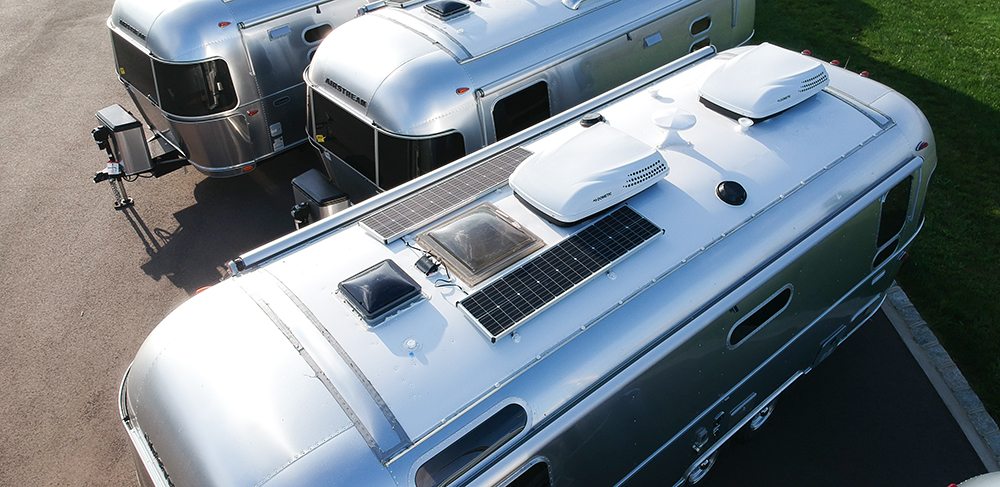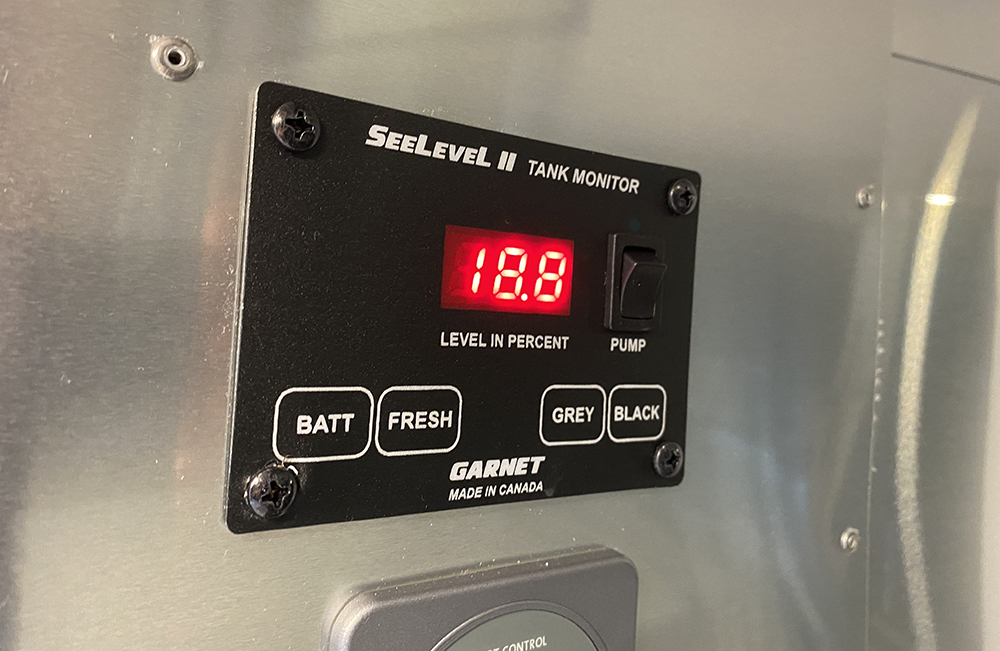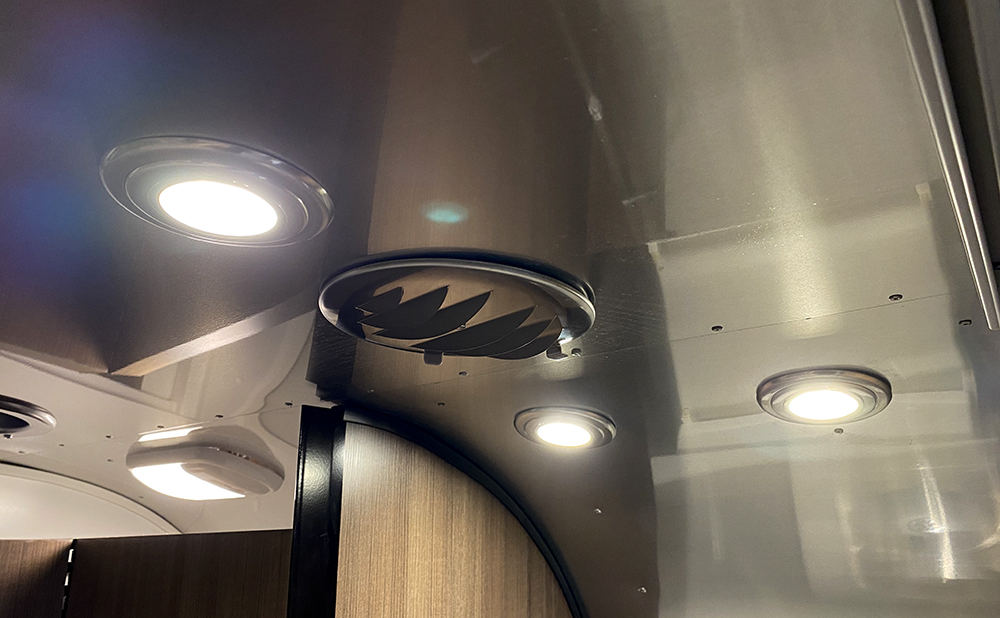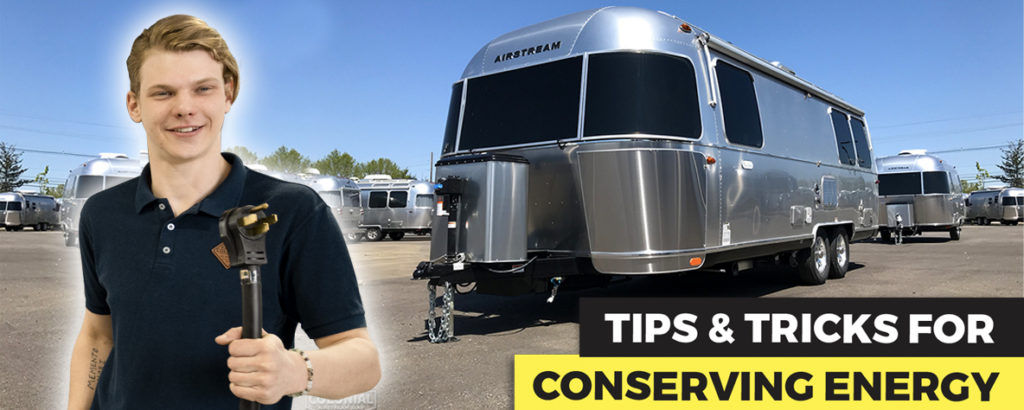Whether you’re going off the grid or boondocking; your power system is relying entirely on your batteries, therefore it’s important to know the capabilities of your power for when you don’t have access to shore power.
Sure, you can plug in at the campground. But if you want to get off the beaten path, you’ll need to keep an eye on the electricity needed to power your adventure. Whether you’re using AGM or lithium batteries, you’ll want to conserve its charge for as long as possible.
While some of these tips and tricks seem rather obvious – it’s the small changes in your camping lifestyle that could save you when you’re off the grid! Make sure to plan ahead when traveling, charge your devices, and onboard batteries when you have access to shore power.
Outside Your Trailer
While you’re likely harnessing free energy from the sun with your roof-mounted solar panels, it’s important to keep your solar panels clean so they can operate at peak performance. Dust will naturally collect while traveling and even while in storage.

Another option would be getting a portable solar panel to charge your onboard battery. This gives you the flexibility to move the portable panel around to the sunniest location while still being able to reach the solar input located next to your battery box. If you’re looking to optimize your solar harvest, avoid parking in shaded areas, since the sun = power!
In colder weather conditions, avoid parking in shade, while keeping your awnings rolled in. Try to allow as much sunlight to touch the exterior of the Airstream as possible. Letting sunlight in through the windows will cause a greenhouse effect and heat up your interior.

Another exterior option would be adding a skirting solution such as AirSkirts. These inflatable skirts increase heat or cold retention by up to 75%, which ultimately saves energy used.
Your travel trailer comes with an electronic battery disconnect feature, by using this, your onboard batteries will get charged from any source such as shore power, solar panel system, or your 7-way tow cable. Weather in the “on” or “off” position. This means you can be charging your batteries while not actively using power throughout the system.
Inside Your Trailer
As we look at your control panel – You can see your battery life and how to turn off some resources of your trailer when you’re not using them. Such as your water pump, you can conserve battery power by switching it off.

And although your furnace uses propane for heating, the warm air is then pushed through the cabin by a 12V fan which in turn uses your energy. If you aren’t using the furnace or hot water at that moment, be sure to turn them off to conserve battery power.
While most models come standard with LED light bulbs – not all units are created equal. If your unit is using a standard bulb, it would be wise to change them to LED lights as they are highly efficient and use less amps, or you can use no power at all by turning the lights completely off when you’re not using them.

Your average 12-volt all-electric refrigerator in your travel trailer features low power consumption and high electrical efficiency. When loading food into the refrigerator, try to make sure it’s already cooled instead of warm food. If the food is warm, it will raise the temperature inside. Also, don’t leave the refrigerator or freezer door hanging open for longer than needed – the warmer the inside gets – the more power it needs to cool down.
Whether you’re an experienced boondocker or just a beginner, you’ll quickly realize that we take our unlimited power at home for granted when you need to preserve your battery life to go off the grid!

